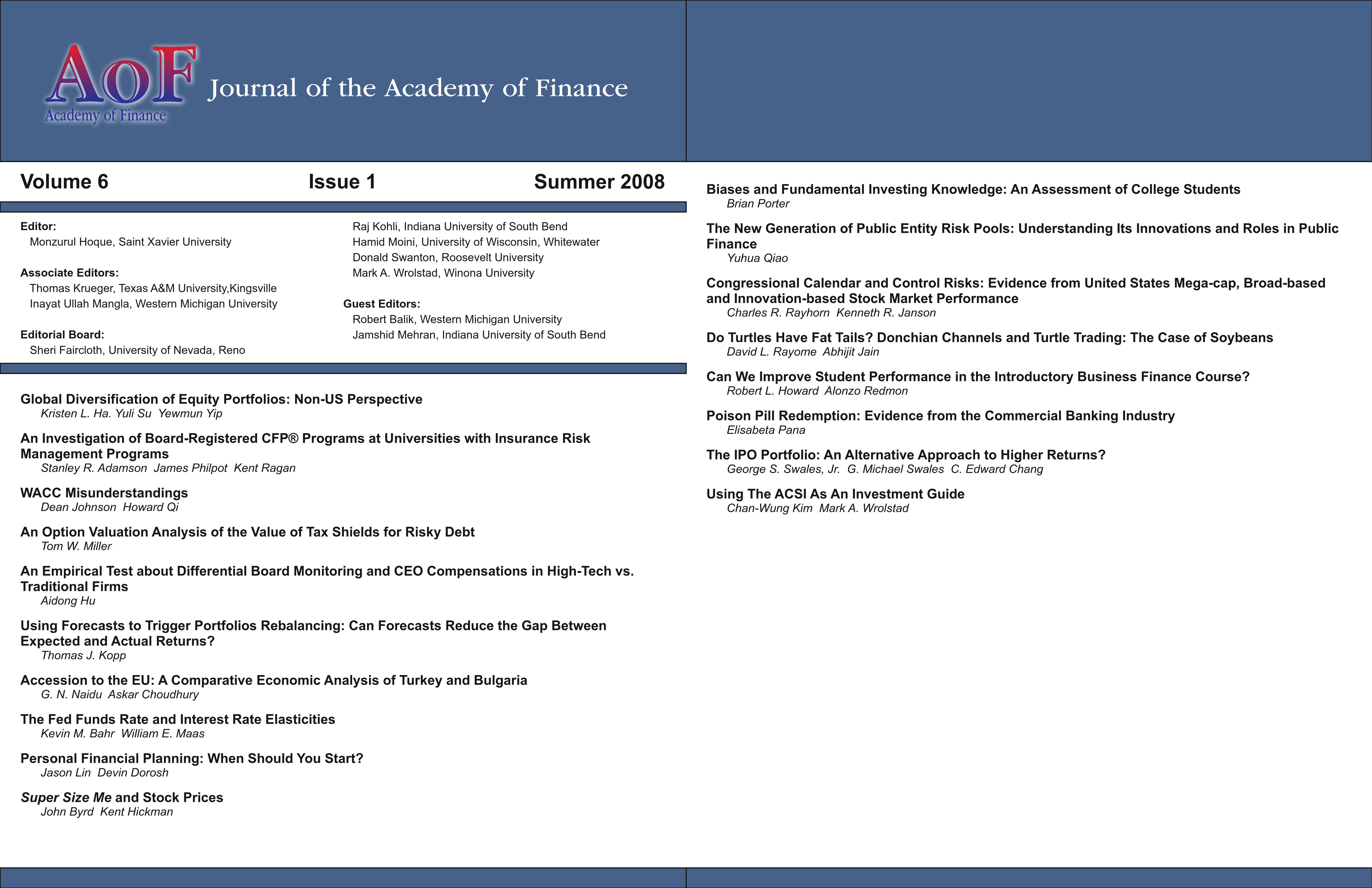Do Turtles Have Fat Tails? Donchian Channels and Turtle Trading: The Case of Soybeans
DOI:
https://doi.org/10.58886/jfi.v6i1.2421Abstract
This paper attempts 10 simulate "Turtle Trading" to ascertain whether the legend holds kernels of truth. More importantly, the research provides information on whether the turtle system has merit, and what the more important ingredients might be. The system, a channel breakout system, is tested with data from soybean futures contracts over a 27 year period; from 1980 into 2007. An initial amount of capital of $5,000.00 grows to $187,762.50 under the best case scenario. One of the most important ingredients in the turtle system is the use of stops to preserve capital. Indeed, the capital preservation rules may be the most important ingredient. Random behavior in the financial markets, as predicted by efficient market proponents, would lead to normal distributions of returns with "skinny" tails. Trend traders, like the turtles, believe that prices move in trends that defy the description of random movement. These trends lead to distributions of returns with "fat tails". The analysis of more than 100 futures contracts and several hundred trades over more than 27 years in this paper lend credence to the idea that the "Turtles" do have "fat tails".





